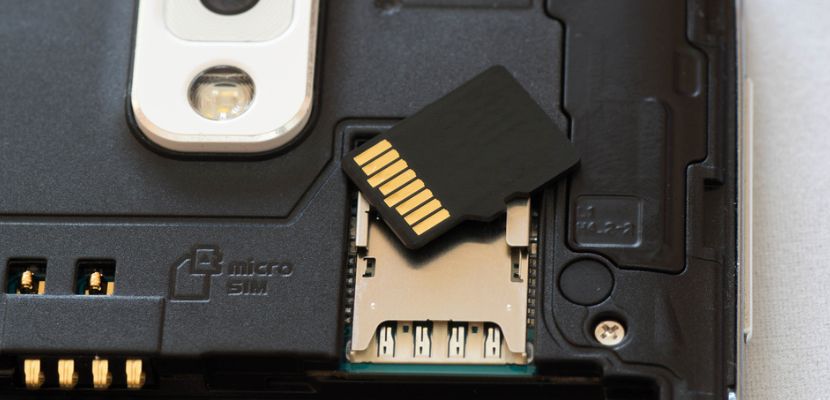An expansion card, also known as an expansion board, adapter card, or accessory card, is a circuit board that can be inserted into an expansion slot of a computer motherboard or backplane to add functionality to a computer system via the expansion bus. Expansion cards are a way to upgrade a computer's capabilities by adding features that are not available on the motherboard.

What Does an Expansion Card Consist of?
An expansion card typically consists of several key components that allow it to interface with the computer's motherboard and offer additional functionality. Here's a breakdown of the main part of an expansion card:
- Printed Circuit Board (PCB). The foundation of the expansion card is a flat, rigid board made of insulating material with conductive pathways etched or printed onto it. These pathways connect various components on the card.
- Edge connector. This part of the card slots into the expansion slot on the motherboard. The edge connector ensures that the card is electrically connected to the motherboard, allowing communication between the card's components and the computer's system.
- Integrated circuits (ICs). These are the brains of the expansion card and can include microprocessors, memory chips, and other circuitry necessary for the card's function. For example, a graphics card will have a GPU (Graphics Processing Unit) as its primary IC.
- Jumpers and DIP switches. Older expansion cards often included jumpers and DIP (Dual In-line Package) switches to configure settings manually. Modern cards usually handle configuration through software or firmware.
- External connectors. Depending on the card's purpose, it might have ports or connectors that are accessible from the outside of the computer case. For example, a sound card might have jacks for headphones and a microphone, while a network card would have an RJ-45 connector for an Ethernet cable.
- Cooling mechanisms. High-performance expansion cards, like graphics cards, can generate a lot of heat and, therefore, include cooling mechanisms such as heatsinks, fans, or even liquid cooling systems to dissipate heat efficiently.
- Auxiliary power connectors. Some power-hungry cards, especially high-end graphics cards, require more power than the motherboard slot can provide. These cards have connectors for additional power directly from the computer’s power supply unit (PSU).
- Memory. Certain types of expansion cards, such as graphics cards, come with their onboard memory (VRAM) to store data needed for their operations, reducing the load on the system's main RAM.
- Firmware or BIOS. Some expansion cards have their firmware or BIOS (Basic Input/Output System) chips that contain the software necessary for the card to communicate with the rest of the computer system, often allowing for updates to add features or fix bugs.
What Is an Expansion Card Used For?
Expansion cards serve a variety of purposes, allowing users to enhance and customize their computer systems based on specific needs or preferences. Here are some of the primary uses for expansion cards:
- Upgrading graphics capabilities. Graphics cards (or video cards) improve a computer's ability to render graphics, making them essential for gaming, video editing, and graphic design. They can provide faster, more efficient processing of visuals, support for multiple monitors, and better overall display quality.
- Enhancing audio quality. Sound cards offer improved audio capabilities over standard onboard audio. They are used by audiophiles, music producers, and gamers who require high fidelity sound, support for advanced audio technologies, or the ability to connect a variety of audio input and output devices.
- Expanding connectivity options. Network cards (wired or wireless) connect a computer to a network, enhancing or adding networking capabilities not available on the motherboard. Similarly, USB cards add additional USB ports, and SATA cards can add more or faster connections for storage devices.
- Increasing storage capacity and speed. Storage controller cards allow for the connection of additional hard disk drives or solid-state drives (SSDs), which can be crucial for users who need more storage space or want to implement RAID configurations for redundancy or speed.
- Adding specialized ports and interfaces. Some expansion cards add specific ports not commonly found on motherboards, such as FireWire for video equipment, Thunderbolt for high-speed data transfer, or legacy ports like serial and parallel for older devices.
- Improving internet connectivity. Modem cards, although largely obsolete now due to broadband internet, were used to connect to the internet via dial-up service. Modern equivalents might include cellular modem cards for mobile internet access.
- Introducing new features. This includes TV tuner cards for watching and recording live TV on a computer, video capture cards for converting video from external sources into digital format, and even specialized cards like FPGA (Field-Programmable Gate Array) for custom computing tasks.
Types of Expansion Cards
Here are several types of expansion cards commonly used in computers:
- Graphics card (video card). Enhances the quality of the graphics displayed on a monitor. It is one of the most upgraded components in computers for gaming and professional graphics work.
- Sound card. Improves the computer’s audio output quality and may offer advanced features like surround sound or multiple audio channel support.
- Network Interface Card/Controller (NIC). Enables a computer to connect to a network (including the internet) using an Ethernet cable or, in the case of wireless network cards, Wi-Fi.
- Storage controller card. Adds support for storage interfaces that are not natively supported by the motherboard, such as additional SATA (Serial ATA) ports for hard drives or SSDs.
- USB card. Adds additional USB ports, allowing more USB devices to be connected to the computer.
- TV tuner card. Allows a computer to receive television signal, enabling it to function as a television or digital video recorder.
- Modem card. Used for dial-up connections to the internet over a phone line (largely obsolete with the advent of broadband internet connections).